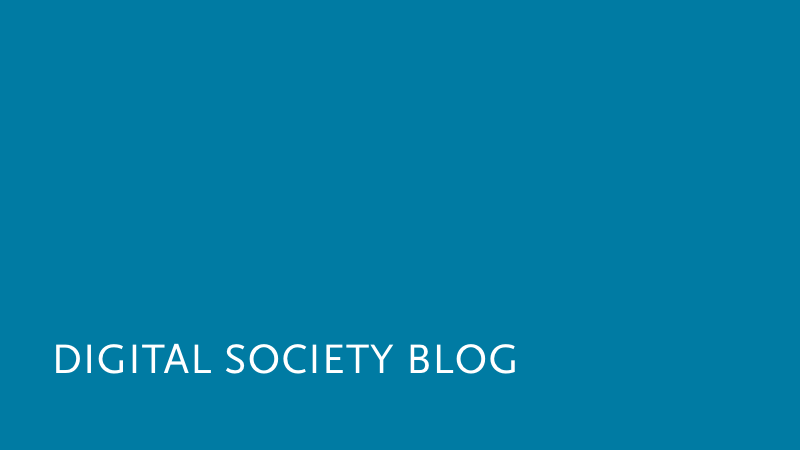Unsere vernetzte Welt verstehen

Wie entwickelt sich Hardware? Drei große Hardware-Trends: Konnektivität, Ubiquität, Individualisierung
Unser Doktorand Robin Tech beschreibt in seinem Blogbeitrag die Ergebnisse einer Diskussionsrunde über die größten Hardware-Trends bei der diesjährigen IFA. Kurz und knapp: Technologien verlieren an Bedeutung, während Applikationen immer wichtiger werden. Sinnvolle Applikationen für ubiquitäres Computing, vernetzte Sensoren und individualisierte Produkte werden schon bald so selbstverständlich sein wie fließendes Wasser oder das Telefon.
On September 6th I had the great pleasure to moderate a panel discussion on some of the main trends in hardware at this year’s IFA. My guests were Thomas Andrae, Director at 3M New Ventures, Jackson Bond, Head of Product at relayr, Julian Leitloff, Managing Director at Stilnest, Martin Kamprath, Officer Technology Transfer at Helmholtz Association, and Maxima Renz, an entrepreneur who works at Chr. Renz GmbH. We discussed three main trends, namely: connectivity, ubiquity, and customization.
Smarting up the German Mittelstand
Thomas Andrae started off with a focus on the impact that these developments have on the backbone of the German economy: small- and medium-sized company, the Mittelstand. He highlighted how ever cheaper hardware allows virtually any factory owner to better understand the physical spaces her machines are in and, in turn, gain additional and meaningful insights on production processes. Jackson Bond chipped in and explained that sensor hardware in conjunction with analytics software not only makes manufacturing cheaper but better. „Smarter decision making is what will help the Mittelstand to keep its edge.“ said Renz.
Legal frameworks matter — particularly in Germany
A major challenge ubiquitous hardware and data generation faces, particularly in Germany, is data privacy. And it is not just the general public’s anxiety, but a reluctance of commercial organizations as well, Kamprath said. Few companies will trust just anyone with their data or hand it to a cloud provider. This generates new challenges and not least necessitate reliable and enforceable legal frameworks, e.g., for transferring data analytics from consumers to cloud storage owned by another company than the merchant or manufacturer of the data generating product. „It’s about simplifying sophisticated technologies to an usable degree and embedding them in an ecosystem — including the legal frameworks.“ Jackson said. Especially startup companies, Kamprath elaborated, need frameworks that fit modern times in order to commercialize cutting edge technologies.
Technology requires meaningful applications
When discussing technological advancements, one is easily taken away by the myriad of opportunities and possibilities. Thomas Andrae emphasized that it is really the application that matters: „Connectivity, ubiquity, and customization are not ‚killer apps‘ by themselves, but sensors that help to reduce rejects in factories are.“ „In future, meaningful applications will become as ordinary as running water or the telephone“ he elaborated. Julian Leitloff commented that most of his customers do not care whether a piece of jewelry is 3D-printed or not — they do care, however, that it is unique and extraordinarily looking. On that matter, Leitloff expanded on the notion of simplicity again: „Most people don’t want to personally personalize a product. They want a tailor-made and individualized product, but without much hassle — neither for them nor the producer who would charge more for additional effort. And that is an excellent application for the technology of 3D printing.“
tl;dr: Technologies don’t matter — applications do. Meaningful applications of ubiquitous computing, interconnected sensors, and customized products will become as ordinary as running water or the telephone.
Dieser Beitrag ist Teil der regelmäßig erscheinenden Blogartikel der Doktoranden des Alexander von Humboldt Institut für Internet und Gesellschaft. Er spiegelt weder notwendigerweise noch ausschließlich die Meinung des Institutes wieder. Für mehr Informationen zu den Inhalten dieser Beiträge und den assoziierten Forschungsprojekten kontaktieren Sie bitte info@hiig.de.
Dieser Beitrag spiegelt die Meinung der Autor*innen und weder notwendigerweise noch ausschließlich die Meinung des Institutes wider. Für mehr Informationen zu den Inhalten dieser Beiträge und den assoziierten Forschungsprojekten kontaktieren Sie bitte info@hiig.de

Jetzt anmelden und die neuesten Blogartikel einmal im Monat per Newsletter erhalten.









